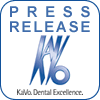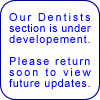Ozone
management of occlusal pit and fissure caries (PFC): 12-month
review
by L Abu-Naba'a, H AL Shorman and E Lynch
Oral Health Research Centre, School of Dentistry, Queen's
University Belfast, NI |
| Ozone
is investigated as a pharmaceutical treatment for primary
occlusal pit and fissure caries (PFC) in a longitudinal
controlled clinical trial. |
Aim
To monitor lesions' remineralisation, arrest or progression
as with/without ozone treatment and assess fissure sealant
retention over treated lesions.
Methods
Permanent teeth with non-cavitated PFC in 89 patients were
enrolled. Teeth were cleaned using air-abrasive system (Prophyflex
2®, KaVo, Germany), then the following were recorded:
clinical severity (Ekstrand KR et al, Caries Res. 1998;32:247-54.),
DIAGNOdent® (KaVo, Germany) and ECM IV (LODE BV, Netherlands)
standard scale readings. After randomisation, 195 lesions
were treated with Ozone for 10 seconds (HealOzone unit, CurOzone
USA) and the other half were reserved as controls. 66 of the
treatment group and 66 in the control group further received
a fissure sealant (Guardian®, Kerr). For the unsealed
teeth, the procedure was repeated at 1, 3, 6, 9 and 12 months
(m) while those sealed only had their sealants checked by
Modified USPHS criteria for sealant quality. The changes in
readings were tested from baseline by t-test of (loge recall
value/base value), and paired t-test between various groups
and 2-way analysis for block and treatment effects. The effect
of co-variables was tested.
 |
Results
No adverse effect was recorded. Mean change in ECM was 0.337
and -0.065 for the treatment and control groups respectively.
Difference between groups was better in treatment group from
the first month recall (p<0.05) with the highest change
in the 3m recall. Change in the clinical severity and DIAGNOdent
scores stabilised in the treatment group from the 3 and 6m
recalls respectively. At all recalls these scores were higher
for the control group than the treatment group (p=0.081).
None of the co-variables tested had any effect on the results.
No significant difference was found in the short and long
term retention of sealants in both sealant groups.
Conclusion
Ozone treatment significantly remineralised lesions regardless
to tooth or lesion location or type, while lesions in the
control group suffered from deterioration in their mineral
content. With no significant loss of Fissure sealant retention,
sealing after ozone treatment can best be after 3 months of
treatment.
|




